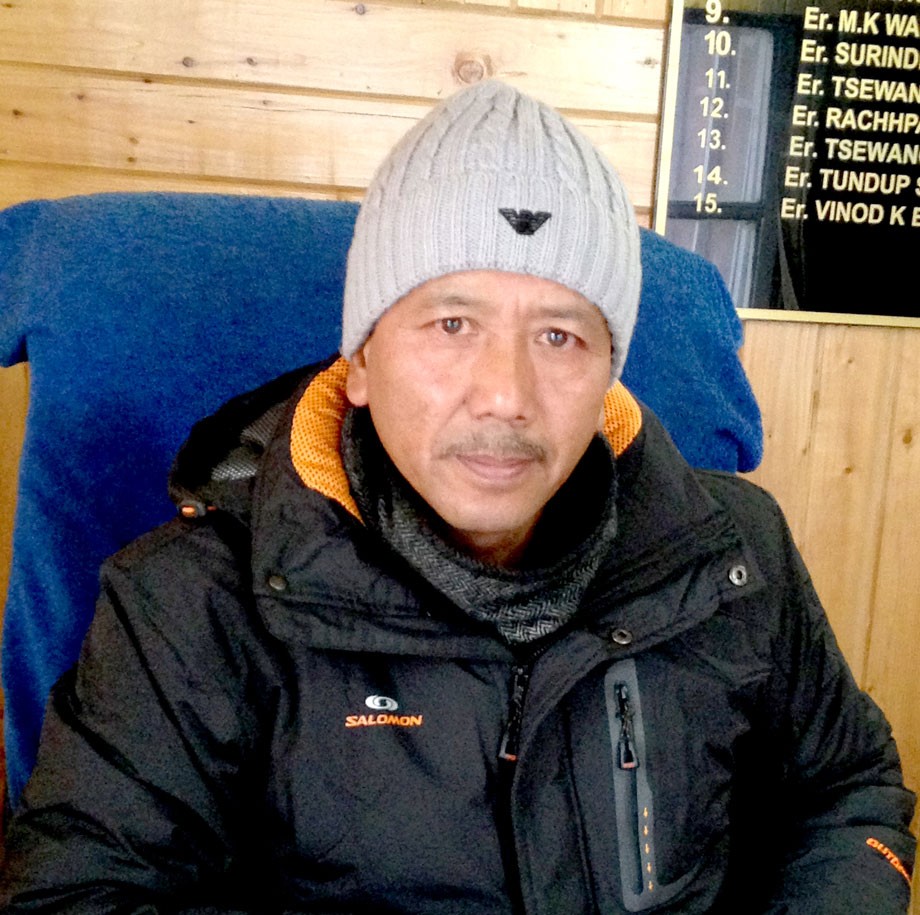In Conversation with Tsewang Paljor, Executive Engineer, PDD, Leh

Q. Brief us about the power source, demand, and supply in the Leh district.
Harnessing the hydropower potential of river Indus, Nimoo-Basgo power project, Alchi with an installed capacity of 45-Megawatt is the main source of electricity for Leh and adjoining areas. The power generation is dependent on the availability of water flow which varies throughout the year and the requirement also varies seasonally. In summer, the total power demand is 16 to 17 MW whereas in winter it goes up to 28 MW.
In winters, power generation from the hydel project drops because of the less water flow in the river. To meet the demand, periodic curtailment during the non-peak hours is enforced. The generating machines from the source are stopped and only one machine with very less load of essential feeders are kept to store sufficient water for peak hours power generation and meet the demand. The deficit power is drawn from the National Grid.
Q. In winter days, there is a problem of power-tripping frequently specially during the night time. What is the reason and how it can be solved?
Owing to the harsh climatic condition in winters, the hydel projects generate limited power, unable to meet the increasing power consumption because of the room heaters, geysers, and other electrical appliances. The available power from the project is insufficient to meet the total demand, thus, 10 MW of power is drawn from the National Grid. Since the power is controlled by the Grid with the limited 10 MW for both Leh and Kargil district, line trips as soon as it is overloaded. Whenever the load abnormally increases or decreases on a Gridline, the whole system gets destabilized and tripped. Secondly, a fault in 132 KV transmission systems in Habak- Alusteng (Srinagar) line also causes power tripping, since both the hydel power projects Alchi and Chhutuk are connected with the Northern Grid. The electrical network is designed for a certain amount of power and cannot be overloaded beyond its capacity.
Power is generated and transmitted accordingly and finally supplied to the consumers. I request all the consumers to use electricity judiciously by using alternative heating systems such as traditional Bukhari, solar energy and central heating. At present we don’t have infrastructure and capacity to meet the demand of electricity for heavy gadgets. Hopefully, by next year all the issues of power shortage will be sorted out with the connection of 220 KV line fully.
Q. How the department keep a check on the misuse of electricity?
An inspection team including, Magistrate, Assistant Engineer, Junior Engineer and women police personnel conduct surprise checking in different areas. Fines are imposed if anyone is found using the electricity illegally. The appliances are confiscated and destroyed in case of theft. But in case of excessive usage, the appliances are seized and returned only after enhancing the power usage in an agreement.
While taking a new power connection, an agreement form mentioning the usage of power is signed. It is illegal if a metered consumer states IKW in an agreement but uses 10 KW.
Declaration of power requirement to the department is very important so that we can arrange the infrastructure for supplying power accordingly. The problem of low voltages, short circuits in transformers happens due to the excessive overloading.
Q. Tell us about different plans to curb power issue?
In the town area, different government schemes such as Integrated Power Development Scheme (IPDS), PMDP Urban, Restructured Accelerated Power Development Programme (RADRP) Part B is going on, which aims to determine Aggregate Technical and Commercial (AT&C) loss. To reduce the AT&C loss, Aerial Bunched cable is used to check power theft and at the same time, to improve the quality of power supply. The scheme is executed and implemented by Rural Electrification Corporation Power Distribution Company Limited (RECPDCL). Hopefully, maximum areas of the Leh town will be covered by next summer.
Also, there is a plan to install a smart meter and with the help of Data Control Centre, we can check and monitor power flow and theft.
Q. Brief us about the Northern Grid power transmission line of 220 KV Srinagar-Drass-Kargil-Khaltse-Leh.
Northern Grid power 220 KV Transmission line of Srinagar-Drass-Kargil-Khaltse-Leh is a flagship project of the Union Government under the Prime Minister's Reconstruction Plan (PMRP). The project was executed by Power Grid Corporation of India Limited (PGCIL). The transmission line is stretched around 335 km long and four new modern Gas Insulated Sub-stations (GIS) of 50 MVA in Drass, 100 MVA in Kargil, 50 MVA in Khaltse and 100 MVA in Leh are built. Almost 150 MW of power can be carried by this line to export or import. Though we are connected with the Northern Grid power transmission line but nearly 50 km stretch between Alusteng and Zainakote in Kashmir is yet to be completed. Hopefully, we will be fully connected by February 2020, after which the power deficit will be easily met, ensuring quality
power in all weather conditions.
Also, Rural Electrification Corporation Transmission Projects Company Limited (RECTPCL), the project implementing agency will be executing 220 KV transmission line from Leh to Nubra valley and Drass to Zanskar.
Message to the readers
“I appeal everyone to declare the amount of power required to the department honestly so that adequate infrastructure can be arranged for that quantity of load.”





